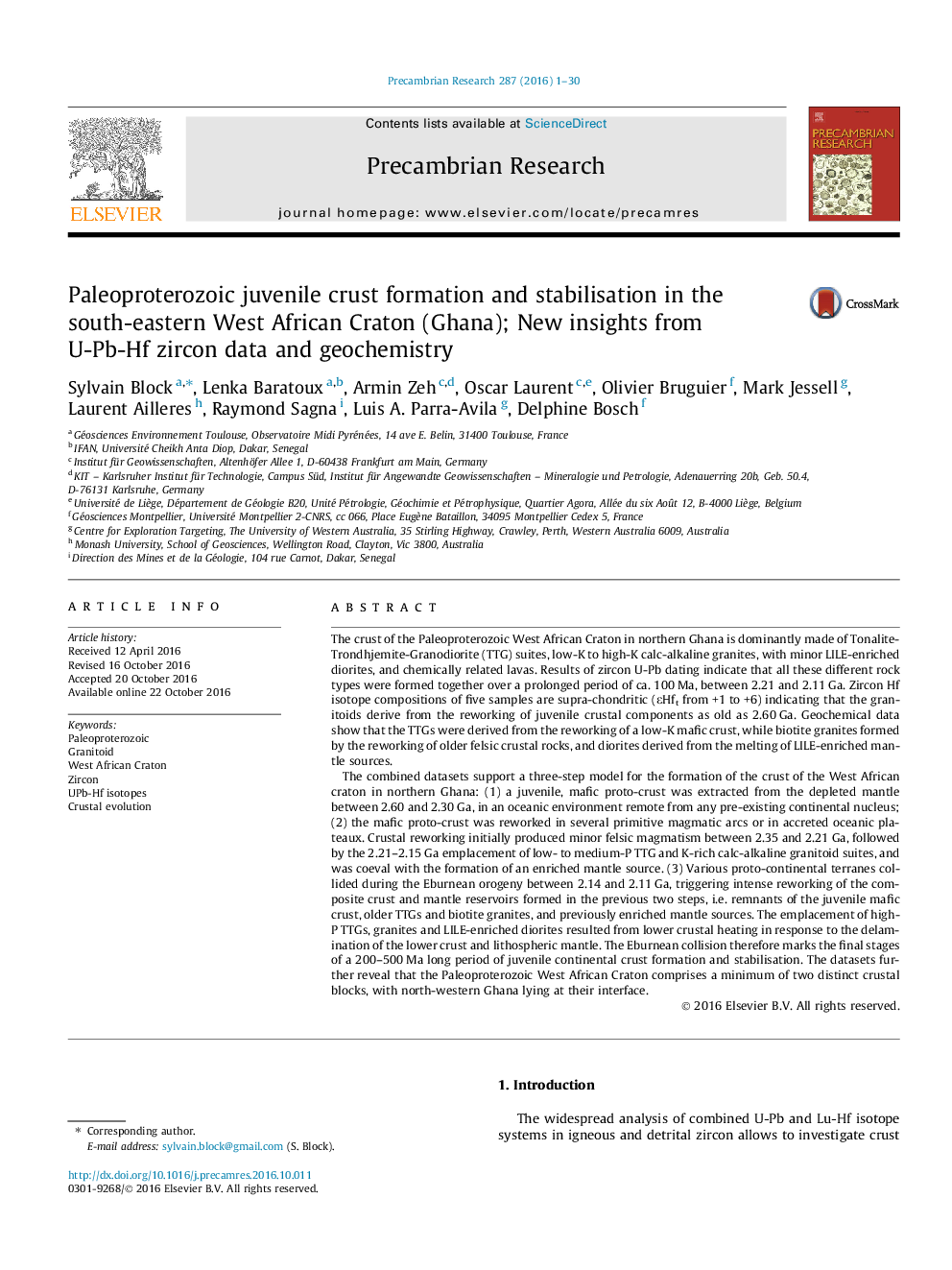| Article ID | Journal | Published Year | Pages | File Type |
|---|---|---|---|---|
| 4722267 | Precambrian Research | 2016 | 30 Pages |
Abstract
The combined datasets support a three-step model for the formation of the crust of the West African craton in northern Ghana: (1) a juvenile, mafic proto-crust was extracted from the depleted mantle between 2.60 and 2.30Â Ga, in an oceanic environment remote from any pre-existing continental nucleus; (2) the mafic proto-crust was reworked in several primitive magmatic arcs or in accreted oceanic plateaux. Crustal reworking initially produced minor felsic magmatism between 2.35 and 2.21Â Ga, followed by the 2.21-2.15Â Ga emplacement of low- to medium-P TTG and K-rich calc-alkaline granitoid suites, and was coeval with the formation of an enriched mantle source. (3) Various proto-continental terranes collided during the Eburnean orogeny between 2.14 and 2.11Â Ga, triggering intense reworking of the composite crust and mantle reservoirs formed in the previous two steps, i.e. remnants of the juvenile mafic crust, older TTGs and biotite granites, and previously enriched mantle sources. The emplacement of high-P TTGs, granites and LILE-enriched diorites resulted from lower crustal heating in response to the delamination of the lower crust and lithospheric mantle. The Eburnean collision therefore marks the final stages of a 200-500Â Ma long period of juvenile continental crust formation and stabilisation. The datasets further reveal that the Paleoproterozoic West African Craton comprises a minimum of two distinct crustal blocks, with north-western Ghana lying at their interface.
Related Topics
Physical Sciences and Engineering
Earth and Planetary Sciences
Geochemistry and Petrology
Authors
Sylvain Block, Lenka Baratoux, Armin Zeh, Oscar Laurent, Olivier Bruguier, Mark Jessell, Laurent Ailleres, Raymond Sagna, Luis A. Parra-Avila, Delphine Bosch,
